Directions (1-5): In each question below are three statements followed by two conclusions I and II. You must take the three given statements to be true even if they seem to be at variance from commonly known facts and then decide which of the given conclusions logically follows from the given statements disregarding commonly known facts.
Q1. Statements: At least Cooler is Gas. All Gas is Bucket. No Cooler is Flipkart.
Conclusions:
I. All Buckets can never be Flipkart.
II. Some Gas can be Flipkart.
(a) If only conclusion I follows.
(b) If only conclusion II follows.
(c) If either conclusion I or II follows.
(d) If neither conclusion I nor II follows.
(e) If both conclusions I and II follow.
Q2. Statements: Only India is Vineet. Some India is Reliance. Only a few Reliance is Airtel.
Conclusions:
I. Some Airtel can be Vineet.
II. Some Airtel can never be India.
(a) If only conclusion I follows.
(b) If only conclusion II follows.
(c) If either conclusion I or II follows.
(d) If neither conclusion I nor II follows.
(e) If both conclusions I and II follow.
Q3. Statements: Only a few Bedsheet is Pillow. No Pillow is Cushion. Only Pillow is Blanket.
Conclusions:
I. Some Blanket is Bedsheet.
II. Only Cushion is Bedsheet.
(a) If only conclusion I follows.
(b) If only conclusion II follows.
(c) If either conclusion I or II follows.
(d) If neither conclusion I nor II follows.
(e) If both conclusions I and II follow.
Q4. Statements: No Chilli is Red. At least Red is Green. Only Green is Big.
Conclusions:
I. All Big is Chilli.
II. Some Big is not Chilli.
(a) If only conclusion I follows.
(b) If only conclusion II follows.
(c) If either conclusion I or II follows.
(d) If neither conclusion I nor II follows.
(e) If both conclusions I and II follow.
Q5. Statements: All LG is Samsung. All LG is Micromax. Only Micromax is Lenova.
Conclusions:
I. Some Lenova can be LG.
II. Some Samsung is Micromax.
(a) If only conclusion I follows.
(b) If only conclusion II follows.
(c) If either conclusion I or II follows.
(d) If neither conclusion I nor II follows.
(e) If both conclusions I and II follow.
Directions (6-10): Read the following information and answer the questions that follow.
Five friends A, B, C, D, and E like reading while traveling. The authors they like to read are Dan Brown, Jeffery Archer, Durjoy Dutta, Khaled Hosseini, and Sidney Sheldon but not necessarily in the same order. The places they are traveling which are France, Canada, UK, Germany, and Australia. The person who is traveling to Germany does not read Khaled Hosseini. A is going to France while reading Jefferey Archer. B reads Khaled Hosseini, whereas D enjoys Durjoy Dutta. The persons traveling to Germany and UK are not reading Dan Brown. C is going to Australia and reads Sidney Sheldon.
Q6. Who visited Germany?
(a) E
(b) D
(c) B
(d) None of these
(e) Can’t be determined
Q7. Find the combination which is incorrect?
(a) E – Canada
(b) C – Australia
(c) B – France
(d) D – Germany
(e) None of the above
Q8. What holds true with regards to B?
(a) Reads Dan Brown
(b) Reads Khaled Hosseini
(c) Travels to Australia
(d) Travels to Germany
(e) None of these
Q9. Who travels to Canada?
(a) C
(b) B
(c) A
(d) D
(e) None of these
Q10. Find the incorrect combination of Author- Travel destination?
(a) Dan Brown – Canada
(b) France – Durjoy Dutta
(c) Germany – Durjoy Dutta
(d) Australia – Sidney Sheldon
(e) None of these
Directions (11-15): Study the following sequence carefully and answer the questions given below.
H @ T R $ D % E J ^ K & L A * N π B V £ C © O Z µ X ¥ W α € U P Ω M ∞ I
Q11. How many meaningful words can be formed if each letter is used once by using 3rd, 8th and 16th element from the left end?
(a) None
(b) One
(c) Two
(d) Three
(e) None of these
Q12. What is the position of ‘&’ with respect to the one which is to the immediate left of ‘W’ in the given series?
(a) Fifteenth to the left
(b) Sixteenth to the left
(c) Fourteenth to the left
(d) Seventeenth to the left
(e) None of these
Q13. How many letters are there which are immediately preceded by and immediately followed by a symbol?
(a) Eight
(b) Seven
(c) Six
(d) Nine
(e) None of these
Q14. Which amongst the following element is 9th to the left of 12th element from the right end?
(a) π
(b) B
(c) *
(d) N
(e) None of these
Q15. How many vowels are there which are immediately preceded by a symbol and immediately followed by a consonant?
(a) Two
(b) Four
(c) Three
(d) One
(e) None of these
Directions (16-20): Study the information carefully and answer the following questions.
Eight people i.e. A, B, C, D, E, F, G and H sit in a square shaped table but not necessarily in the same order. Four people sit at the four corners of the table and face inside the table. Four people sit at the middle of the four sides and face outside the table. B sits third to the right of A. E sits second to the right of B. One person sits between E and H. G sits second to the right of H. C sits second to the right of D who does not sit adjacent to G. F does not sit at the corner.
Q16. How many people sit between F and G when counted from left of F?
(a) One
(b) None
(c) Two
(d) Four
(e) Three
Q17. Who sits third to the right of B?
(a) A
(b) H
(c) E
(d) F
(e) None of these
Q18. Four of the following five are alike in a certain way and hence form a group. Find the one which does not belong to that group.
(a) G
(b) H
(c) D
(d) E
(e) B
Q19. How many people sit between F and B when counted from left of F?
(a) One
(b) Two
(c) Four
(d) None
(e) Three
Q20. Which of the following statements is true?
(a) C faces inside the table.
(b) G is neighbour of A.
(c) E faces G.
(d) H faces C
(e) All are true
Solutions
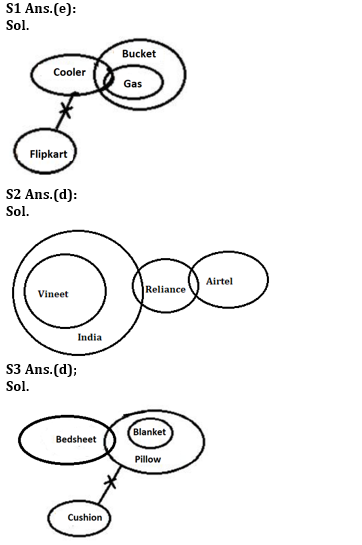
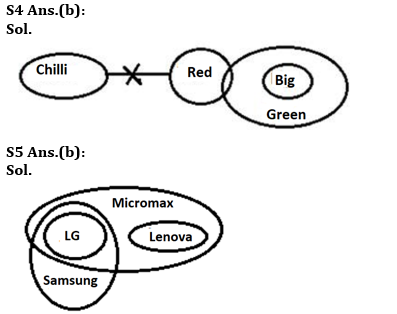
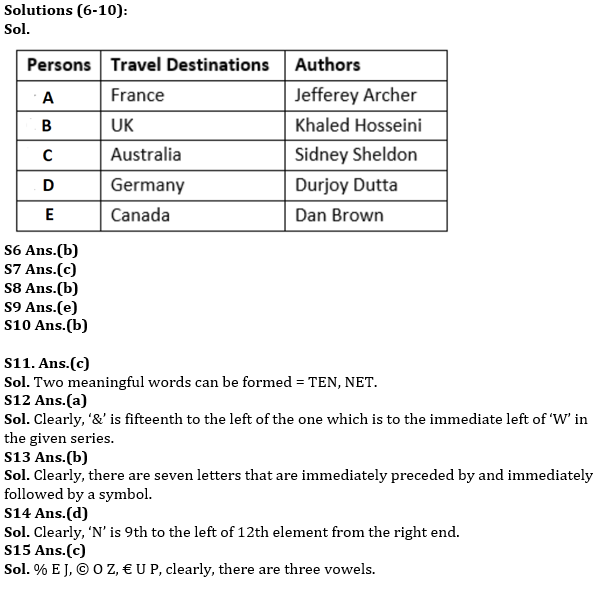
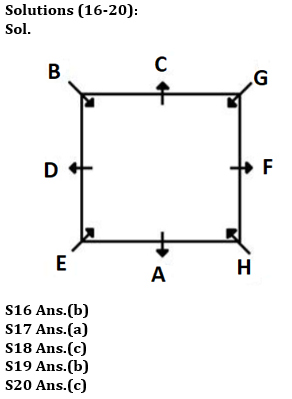
Click Here to Register for Bank Exams 2022 Preparation Material


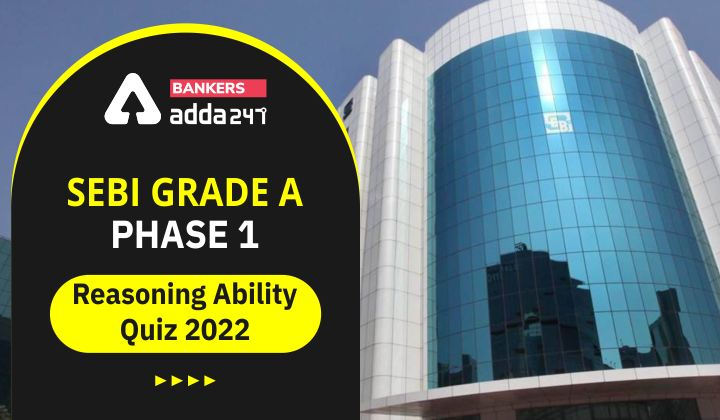


 GA Capsule for SBI Clerk Mains 2025, Dow...
GA Capsule for SBI Clerk Mains 2025, Dow...
 The Hindu Review October 2022: Download ...
The Hindu Review October 2022: Download ...
 ECGC PO Scorecard 2025 Out, Check Marks
ECGC PO Scorecard 2025 Out, Check Marks




